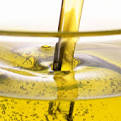












Cassia - Cinnamomum Cassia
Family:Lauraceae
Synonyms: C.aromaticum, Laurus Cassia, Chinese cinnamon, false cinnamon, cassia cinnamon, Cassia lignea.
General Description:A slender, evergreen tree up to 20 metres high, with leathery leaves and small white flowers. It is usually cut back to form bushes for commercial production.
Distribution: Native to the south eastern parts of China, found to a lesser extent in Vietnam and India (Cochin).
Other Species: Not to be confused with the Ceylon Cinnamon bark (C.verum) which is from a related species. There are also several other varities from different regions used for essential oil production - see Botanical
Classification section.
Herbal/Folk Tradition:Extensively used as local domestic spice. It is used medicinally in much the same way as Celon cinnamon, mainly for digestive complaints such as flatulent dyspepsia, colic, diarrhoea and nausea, as well as the common cold, rheumatism, Kidney and reproductive complaints.
The powdered bark is current in the British Herbal Pharmacopia as a specific for flatulent dypepsia or colic with nausea.
Actions: Antidiarrhoeal, anti-emetic, antimicrobial, astrigent, carminative, spasmolytic.
Extraction:Essential oil 1. by steam distillation from the leaves, and 2. by water distillation, from the bark, leaves, twigs and stalks.
Characteristics:1.Leaf oil is brownish yellow(the rectified oil is pale yellow0, with sweet woody-spicy tenacious odour. ". Bark oil is a dark brown liquid with a strong, spicy warm, resinous odour.
Principal Constituents:Leaf and Bark oil contain mainly cinnamic aldehyde {75-90 per cent) with some methyl eugenol, salicyladehyde and methylaldehyde.
Safety Data:Dermal toxin, dermal irritant,dermal sensitizer, mucous membrane irritant.
Aromatherapy/Home Use:None. 'Should never be used on the skin (one of the most hazardous oils).
Other Uses: Some pharmaceutical applications due to bactericidal properties, such as mouth washes,toothpastes, gargles, also tonic and carminative preparations. Extensively used in food flavouring, perfume and cosmetics, due to its dark colour.
Reference: The Encyclopedia of Essential Oils: Julia Lawless.
Articles Latest
- Chamomile Roman - Chamaemelum nobile
- Chamomile Maroc - Ormenis multicaulis
- Chamomile German - Matricaria recutica
- From Biology To Aromatherapy
- Plant Messengers
- Celery Seed-Apium graveolens
- Cedarwood Virginian - Juniperus virginiana
- Cedarwood, Texas- Juniperus ashei - Essential oils
- Cedarwood Atlas- Cedrus atlantica - Essential Oils
- Cassie - Acacia Farnesiana - sweet acacia
- Cassia - Cinnamomum Cassia
- Cascarilla Bark - Croton eluteria
- Carrot Seed- Dacus Carota
- CARDAMON
- CARAWAY
- CANANGA
- CAMPHOR
- CALAMUS
- Calamintha-Calamintha officinalis
- CAJEPUT- Melaleuca cajeputi
- Plant Expression
Articles-Most Read
- Home
- Balsam Canadian - Abies balsamea
- Balsam Peru
- Copaiba Essential Oil
- North America: Tea Tree and Monarda-3
- Basil French - Ocimum basilicum
- Basil Exotic
- North America: Tea Tree and Monarda-2
- Exploring Transcultural Constants
- Thyme Essential Oil
- Balsam Tolu
- Palma Rosa
- The Bioactivity of Essential Oils
- Bay - West Indian - Pimenta racemosa
- Benzoin - Styrax benzoin
- Why Pharmacology Cannot Demonstrate Essential Oil Efficacy
- Exploring Essential Oil Activity The Conventional Way
- Complex information From Plants
- Aromatherapy: An Answer
- Contacts
